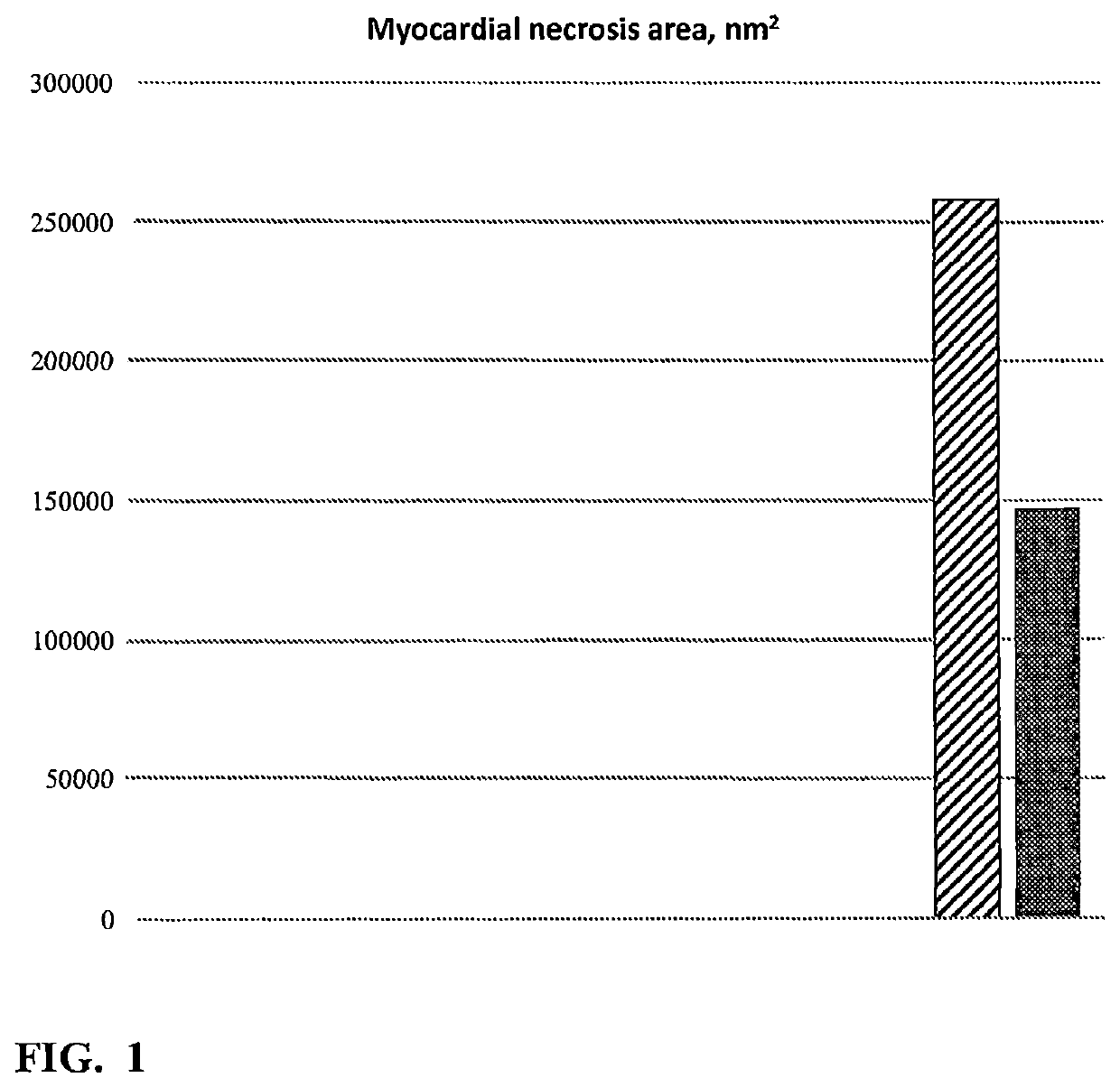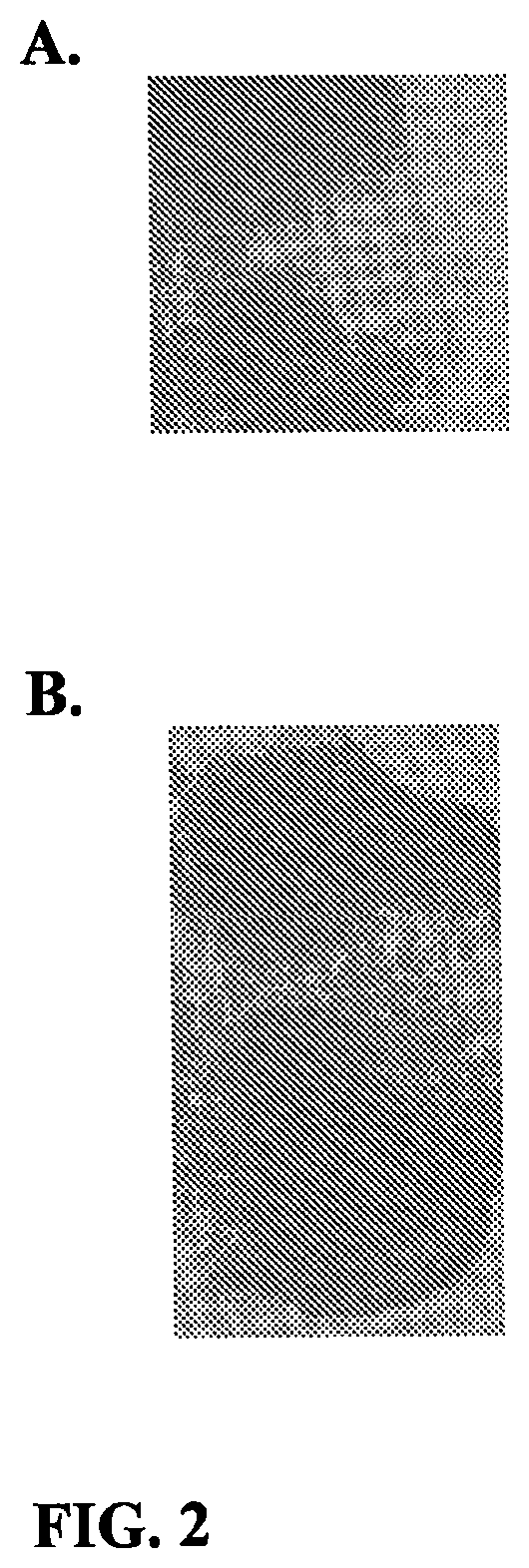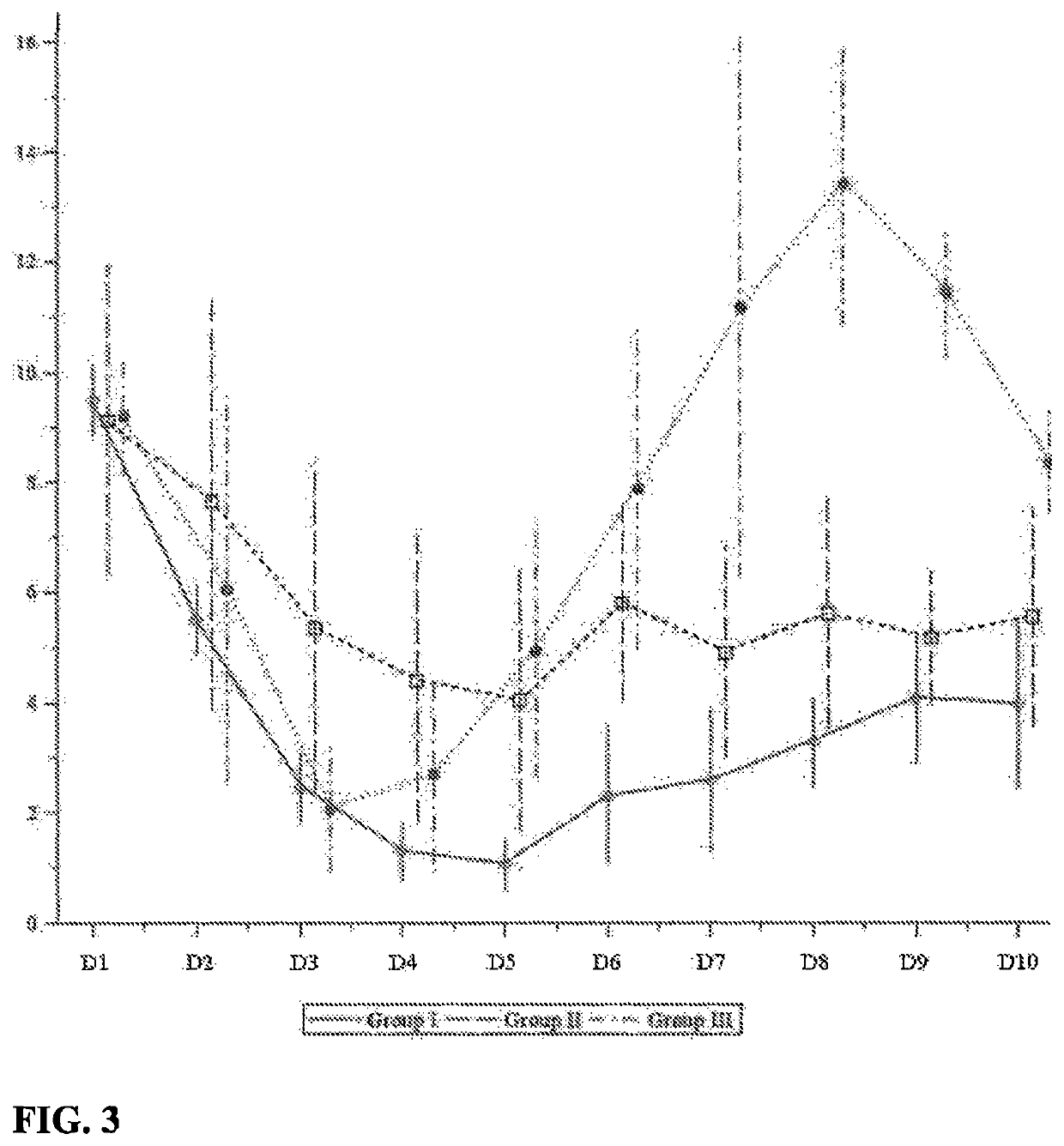Method to improve safety and efficacy of anti-cancer therapy
a technology of anticancer therapy and safety, applied in the field of deoxyribonuclease, can solve the problems of significant cancer-related morbidity and mortality, known chemotherapies are associated with serious side effects including myelopathy, hematopathy, etc., to improve the safety and efficacy of radiation therapy, prevent or ameliorate toxicity, and increase the effect of radiation therapy
- Summary
- Abstract
- Description
- Claims
- Application Information
AI Technical Summary
Benefits of technology
Problems solved by technology
Method used
Image
Examples
example 1
ion of Acute Doxorubicin Toxicity in Rats
Materials and Methods
[0087]42 Wistar male rats (180-200 g) were used in this experiment (obtained from Stolbovaya nursery of Russian Academy of Medical Sciences). Animals were kept under standard conditions with free access to food and drinking water. Animals were randomized into 7 groups (6 animals in each group) as follows:[0088]1. Group I: control group (no Doxorubicin, no DNase);[0089]2. Group II: animals treated by daily intravenous (IV) injections of Doxorubicin (LENS) at 3.75 mg / kg / day dose for 5 days plus daily intraperitoneal (IP) injections of human recombinant DNase I (Pharmsynthez OJSC) at 15 mg / kg / day dose (30000 KU / kg / day); Doxorubicin and DNase I injections were administered at the same time;[0090]3. Group III: animals treated by daily IV injections of Doxorubicin (LENS) at 3.75 mg kg / day dose for 5 days plus daily IP injections of placebo (water for injection [WFI];[0091]4. Group IV: animals treated by daily IV injections of D...
example 2
ion of Gastrointestinal Toxicity of 5-Fluorouracil / Etoposide Combination Chemotherapy
Materials and Methods
[0104]64 male Wistar rats (170-200 g) were used in this experiment (obtained from Stolbovaya nursery of Russian Academy of Medical Sciences). Animals were kept under standard conditions with free access to food and drinking water. On Day 1, Etoposide (LANCE) 200 mg / kg and 5-fluorouracil (5-FU; EBEWE) 400 mg / kg were given orally via feeding needle in 500 μl of a 9% glucose solution. Animals were divided into 4 groups of 16 rats each. Two hours after the Etoposide / 5-FU challenge, rats were treated as follows:[0105]1. Group I: IV placebo (WFI);[0106]2. Group II: human recombinant DNase I (Pharmsynthez OJSC) at 1.5 mg / kg (3000 KU / kg) dose IV;[0107]3. Group III: human recombinant DNase I (Pharmsynthez OJSC) at 50 mg / kg (100000 KU / kg) dose IV;[0108]4. Group IV: cimetidine solution (Gedeon Richter) at 50 mg / kg dose IV.
[0109]36 hours later, all animals were euthanized and their stomachs...
example 3
ion of Taxane-Induced Suppression of Immunity
Materials and Methods
[0113]10 male 6-week-old (CBAxCS7Bl6) F1 mice (obtained from Rappolovo animal house) were given a single 20 mg / kg dose of paclitaxel (Paclitaxel-Teva) IV. A group of 5 paclitaxel treated mice were injected IP 1 hour later with recombinant mouse DNase gamma (USCN Life Science Inc.) at 2 mg / kg dose IP. A group of 5 untreated mice were injected IP at the same time with 1 ml of placebo (WFI) to serve as the control. All mice were killed 24 hours later by cervical dislocation. The thymuses from each group were collected and homogenized in a separator in RPMI 1640 media supplemented with 10% fetal calf serum. The suspension of thymocytes was filtered and sedimented in a centrifuge at 400×g for 2 minutes and then resuspended with the same media. Thymocytes were plated into 96 well plates (900,000 cells per well in 200 μl of RPMI 1640 supplemented with 10% fetal calf serum (FCS)) and incubated for 32 hours at 37° C., 100% hum...
PUM
| Property | Measurement | Unit |
|---|---|---|
| humidity | aaaaa | aaaaa |
| humidity | aaaaa | aaaaa |
| humidity | aaaaa | aaaaa |
Abstract
Description
Claims
Application Information
 Login to View More
Login to View More - R&D
- Intellectual Property
- Life Sciences
- Materials
- Tech Scout
- Unparalleled Data Quality
- Higher Quality Content
- 60% Fewer Hallucinations
Browse by: Latest US Patents, China's latest patents, Technical Efficacy Thesaurus, Application Domain, Technology Topic, Popular Technical Reports.
© 2025 PatSnap. All rights reserved.Legal|Privacy policy|Modern Slavery Act Transparency Statement|Sitemap|About US| Contact US: help@patsnap.com



